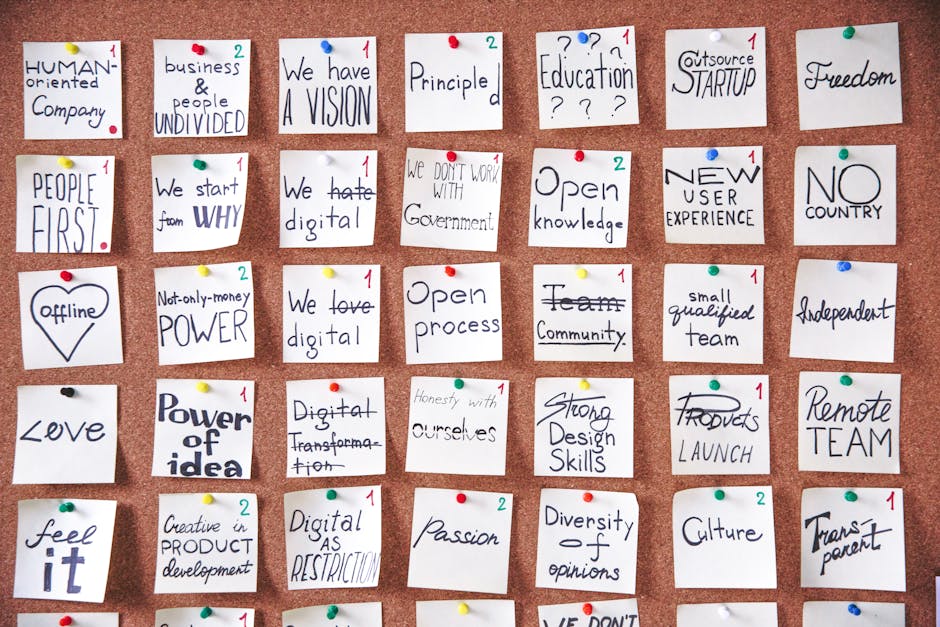In today’s fast-paced tech landscape, serverless frameworks have emerged as a game-changer for developers looking to streamline their workflows. At their core, these frameworks enable developers to build and run applications without the need to manage infrastructure, thus allowing teams to focus on writing code rather than worrying about server maintenance and scaling.
As the demand for rapid deployment and agile responses to market changes rises, serverless architecture is becoming increasingly essential. It aligns perfectly with the modern need for flexible, scalable solutions that can handle fluctuating workloads without constant oversight. In 2025 and beyond, understanding how to effectively leverage serverless frameworks will be crucial for maximizing operational efficiency and delivering high-quality products.
With this growing importance comes the need to stay updated on best practices. Whether you’re a seasoned developer or new to the scene, knowing the current strategies can help you harness the full potential of serverless technology. This article will explore these frameworks, delve into their benefits, and share essential practices that will enhance your development workflow in the ever-evolving digital landscape.

Serverless frameworks represent a modern approach to application development that leverages the power of cloud computing. Instead of managing the underlying infrastructure, developers can focus solely on writing and deploying their code.
At its core, a serverless framework allows developers to build applications as collections of functions that execute in response to events. The cloud provider dynamically allocates resources, handling scaling and infrastructure management behind the scenes.
In a serverless environment, your code runs in stateless compute containers. Think of these as temporary, ephemeral environments that are ready to run your code when called upon. These containers:
This approach contrasts with traditional models, where dedicated servers are typically provisioned and maintained, leading to a more static and often underutilized system.
Several features set serverless frameworks apart from traditional methods:
This model triggers the necessary function to execute, consuming resources only during activity.
Automatic Scaling:
During traffic surges, additional instances of your functions are seamlessly spun up, and during quieter periods, scaling down to zero occurs, minimizing resource wastage.
Built-in Redundancy and Fault Tolerance:
This means your application can withstand failures without requiring additional configuration.
Cost Model:
As we continue to evolve in the tech landscape, understanding what serverless frameworks are becomes crucial for any organization looking to thrive in 2025 and beyond. By embracing this new model, teams can:

Serverless frameworks bring a host of advantages that can significantly enhance your development operations. Let’s break down the key benefits:
In summary, the financial savings, automatic scalability, and expedited development timelines associated with serverless frameworks make them an attractive option for modern software development. Whether you’re a startup or an established enterprise, tapping into these benefits can reshape how you approach building and deploying applications.

Serverless frameworks are revolutionizing how developers approach deployment. Key benefits include:
With serverless, you can deploy code directly without worrying about the underlying infrastructure.
Faster Iteration:
Focus on what matters—features rather than server management.
Reduced Operational Overhead:
Serverless tooling is also a catalyst for improved teamwork:
Standardized serverless platforms foster collaboration among developers, operations, and business stakeholders.
Encouraging Creativity:
Adopting CI/CD practices is crucial in a serverless setup:
Leverage tools like AWS Lambda, Azure Functions, or Google Cloud Functions to integrate CI/CD pipelines effectively.
Ensure Code Reliability:
Regularly run tests and gather feedback to catch issues early, maintaining a smooth workflow.
Minimize Downtime and Risk:
The ultimate goal is to achieve continuous improvement without sacrificing quality. Serverless frameworks equip teams with the tools necessary to make this a reality.

Serverless frameworks bring a breath of fresh air to the development process, fundamentally changing how teams approach deployment. Rather than getting bogged down by server management tasks and infrastructure maintenance, developers can focus on what really matters: writing code and building features. This shift allows them to streamline their workflows significantly.
With serverless, deployment becomes almost effortless. Developers can push updates to their applications in a matter of minutes without worrying about the underlying infrastructure. The framework takes care of scaling the application automatically, allocating resources based on the current demand. This means that during peak times, the framework can seamlessly upscale without any manual intervention, and when traffic dips, it scales back down—saving costs without sacrificing performance.
Operational overhead is drastically reduced, too. Traditionally, managing servers and ensuring uptime requires continuous monitoring and maintenance, which can divert attention from core development efforts. Serverless frameworks eradicate much of this burden. Teams can say goodbye to the days of updating server patches, managing hardware, and scaling in anticipation of user demand. Instead, they can concentrate on delivering high-quality features and iterating quickly based on user feedback.
In essence, serverless architectures empower development teams to embrace a product-centric mindset. By minimizing distractions related to infrastructure, developers can innovate faster, respond to market changes with agility, and enhance the overall quality of their applications. As a result, the workflow becomes not just streamlined, but also more aligned with the goals of modern development—delivering value to users swiftly and effectively.

One of the standout advantages of serverless frameworks is their ability to foster enhanced collaboration among development teams.
In traditional development environments, deployment processes often create silos:
Serverless architecture blurs these lines, encouraging cross-functional teams to work in unison.
With serverless tooling, the deployment process transforms:
This democratization of the process allows developers to focus on what they do best: writing code and building features, while still understanding how those features will be deployed and scaled in real-time.
Serverless frameworks also encourage a culture of experimentation:
As a result, everyone has a stake in the final product, leading to more cohesive and innovative solutions.
Additionally, serverless solutions typically offer comprehensive monitoring and logging capabilities:
As we look towards 2025 and beyond, embracing serverless frameworks will not only transform application development but also redefine how we collaborate.

Adopting continuous integration and continuous deployment (CI/CD) practices with serverless frameworks can radically enhance your development workflow. It allows for more efficient collaboration and rapid iterations, ensuring that code changes can be pushed to production swiftly and safely. Here’s how to set yourself up for success in a serverless environment:
Define Your Pipeline Early: Start by outlining your CI/CD pipeline. Plan the stages of your workflow, from code commit to deployment. Establish key checkpoints, such as automated testing and code reviews, to maintain code quality at every step.
Leverage Infrastructure as Code (IaC): Using tools like AWS CloudFormation, Terraform, or the Serverless Framework itself can make managing your serverless architecture a breeze. By defining your infrastructure in code, you ensure consistency across environments and simplify the process of deploying changes.
Automate Testing: Set up automated tests for your serverless functions. Incorporate unit tests, integration tests, and end-to-end tests to cover different layers of your application. Tools like Jest, Mocha, or the Serverless Framework Plugins can help facilitate testing in a seamless manner.
Implement Monitoring Tools: Continuous deployment doesn’t end after deployment. Include monitoring solutions such as AWS CloudWatch, Datadog, or New Relic to keep tabs on your functions’ performance. Automated alerts can help you catch issues before they affect users.
Canary Releases and Rollbacks: Use canary release strategies for your serverless functions, allowing you to deploy changes to a small subset of users first. This approach minimizes risk and helps verify that new features perform as expected. Ensure that you also have a rollback procedure in place, enabling you to revert back to the previous version if any issues arise after deployment.
Keep Your Functions Small and Modular: Smaller functions are easier to test and deploy independently. Adopt a microservices architecture for your serverless applications, where each function handles a specific task. This modularity not only enhances troubleshooting but also promotes team collaboration, as different teams can work on different functions simultaneously.
By incorporating these best practices into your CI/CD strategy, you’ll create a robust framework for deploying serverless applications that emphasize agility, efficiency, and resilience. This approach not only helps streamline your development processes but also positions your team to react quickly to change, ultimately driving value for your organization in the ever-evolving tech landscape of 2025.

To harness the full potential of serverless frameworks, developers must adopt practices that align with the unique features and constraints of this emerging technology. Here are crucial best practices for 2025:
Creating applications specifically for a cloud environment is critical. This means embracing cloud-native principles such as microservices and event-driven architectures. By designing with the cloud in mind, teams can ensure that their applications efficiently utilize resources, respond quickly to requests, and scale seamlessly as demand grows. Focus on the round-the-clock availability requirements of your application, considering factors like latency and data locality for optimal performance.
One of the core advantages of serverless architecture is the ability to run stateless functions. Stateless functions are faster, easier to scale, and less complex than their stateful counterparts. When designing application logic, avoid dependencies on any internal state. Instead, use external state management solutions—like databases or third-party services—to store necessary information. This approach minimizes latency and boosts overall system reliability.
Cold starts can be a well-known bane for serverless applications, slowing down response times. To mitigate this, developers should focus on refining their functions. Strategies include minimizing the size of deployment packages, optimizing code, and reducing the number of cold starts by using provisioned concurrency where needed. Additionally, consider implementing caching mechanisms to store frequently accessed data, thereby enhancing performance and user experience.
The absence of traditional servers doesn’t mean you can forget about monitoring. Implement robust logging and monitoring solutions to keep track of function performance, error rates, and resource usage. Proactive maintenance is essential—set up alerts for any unusual performance metrics, and have strategies in place for incident response. Regularly reviewing and updating your serverless functions can help in anticipating issues before they affect users.
Security is non-negotiable in serverless development. With multiple components operating across various environments, it’s vital to enforce security best practices. Focus on identity and access management by implementing the principle of least privilege. Regularly audit permissions and access controls to minimize potential vulnerabilities. Additionally, consider using built-in security features offered by your cloud provider to protect data in transit and at rest.
By integrating these best practices into your serverless development strategy, your team will be better positioned to optimize both performance and security while embracing the efficiency of modern cloud architecture. As serverless continues to evolve, staying ahead with these principles will be key to successful implementation and innovation in 2025 and beyond.

Designing for the cloud is all about embracing the unique capabilities and limitations that serverless frameworks bring to the table. In 2025, understanding cloud-native architecture principles is crucial for building efficient, scalable applications. Here are some key points to consider to ensure your applications are optimized for the cloud:
Microservices Architecture: Break your application into smaller, independent services that communicate through APIs. This not only allows for easier scalability but also means you can deploy updates without affecting the entire system. Each service can scale independently based on demand, which is a core advantage of serverless architectures.
Event-Driven Design: Design your applications to respond to events rather than relying on a continuous polling of services. Serverless frameworks excel in event-driven architectures, which can lead to faster response times and lower resource use. By using events to trigger functions, your applications remain responsive and efficient.
Statelessness: Cloud-native applications should maintain statelessness, meaning that each function execution is independent and does not rely on previous executions. This simplifies scaling and error handling, as functions can run anywhere without the need for context from earlier interactions. If you need to maintain state, look for external storage options, like databases or caching services, to keep your application agile.
Resource Optimization: Design with resource constraints in mind. Serverless functions typically have limits on execution time and memory usage. Be mindful of these constraints when coding and test your functions under expected user loads. Efficient coding practices, such as minimizing package sizes and reducing startup time, will improve performance and cost-efficiency.
Automated Scaling: Take advantage of the inherent scaling behaviors of serverless frameworks. They automatically provision the necessary resources based on incoming requests. This means you don’t have to spend time on capacity planning. Yet, understanding how your services behave under load will help you design with scaling in mind, enabling robust performance during peak times.
Embracing a cloud-native approach means more than just migrating your application; it’s about rethinking how you build and operate software in a serverless world. By incorporating these principles, you can maximize efficiency, reduce latency, and create a seamless user experience, all while minimizing the operational burden on your development team.

In the serverless landscape, one of the defining principles is to embrace stateless functions. A stateless function doesn’t retain any data from previous executions, which means it can scale efficiently and easily handle incoming requests. This approach contrasts sharply with stateful services, which must manage persistent data and often come with significant overhead in terms of performance and complexity.
Benefits of Stateless Functions
The primary advantage of stateless functions lies in their simplicity and scalability. Since each function call is independent, you can deploy multiple instances of the same function to handle a surge in traffic without worrying about data consistency or maintaining session states. This translates to lower latency and faster response times, as the infrastructure can spawn as many instances as needed on demand. Furthermore, debugging and troubleshooting become easier since there’s no hidden state to track.
Techniques for Managing State Efficiently
While embracing stateless functions, it’s important to understand how to manage state when necessary. One common practice is to externalize state management. Use managed services like databases (e.g., DynamoDB or Firebase), distributed caches (like Redis), or object storage to maintain state outside of your functions. This keeps your functions clean and focused solely on processing inputs to generate outputs.
Another approach is to leverage event-driven architecture. By utilizing message queues or event streams, you allow different components of your application to communicate asynchronously. This can significantly enhance resilience and decouple your services, making the overall system more robust.
In essence, building stateless functions is not just about adhering to a principle—it’s about optimizing your serverless applications for the best performance and flexibility. As you design your workflows, remember that the real power of serverless comes from simplicity and the ability to scale seamlessly.

When adopting serverless frameworks, performance optimization becomes crucial to unlocking their true potential. A few strategies can help you minimize notable issues, like cold start times, and enhance overall application efficiency.
1. Reduce Cold Start Times: Cold starts refer to the latency that occurs when serverless functions are invoked for the first time or after a period of inactivity. To tackle this, consider the following methods:
– Frequent Invocation: One simple trick is to invoke your functions periodically to keep them warm, ensuring they’re ready to handle requests promptly.
– Choose Faster Languages: Some programming languages inherently have faster cold start times. If performance is a priority, opting for languages like Go or Node.js could make a difference.
2. Utilize Caching: Implementing a caching strategy can significantly boost performance. By using services like AWS Lambda with Amazon ElastiCache or CDN-based caching, repeated requests can be served faster, reducing the workload on your serverless functions. Choose which data to cache based on access frequency – the more often it’s called, the more relevant it is for caching.
3. Efficient Coding Practices: Write clean, modular, and efficient code. This can minimize resources used during execution, decrease function duration, and ultimately save costs. Here are a few tips:
– Keep your functions focused on single responsibilities, reducing complexity and execution time.
– Use minimal libraries to lower the package size and speed up loading.
4. Avoid Resource Hogs: Monitor your serverless applications and identify functions that are using excessive time or memory. By optimizing queries, reducing payload sizes, and decomposing heavy functions, you can enhance performance and responsiveness. Tools like AWS Lambda Insights can help you analyze and troubleshoot these issues.
By optimizing performance in your serverless applications, you enhance the user experience and improve your workflow efficiency—all crucial for staying competitive in 2025.

Monitoring and maintaining your serverless applications is crucial for ensuring they run smoothly and efficiently. Without the familiar infrastructure management routine, it can be easy to overlook what’s happening in the cloud. Below are some best practices to help you stay on top of performance and reliability:
Visual dashboards can help you quickly identify issues and trends.
Set Up Alerts:
Timely notifications enable you to respond to issues before they affect users.
Log Effectively:
Consider structured logging formats to simplify future searching and analysis.
Conduct Regular Health Checks:
Perform root cause analysis on any anomalies to prevent recurrence of similar issues.
Implement Proactive Maintenance Strategies:
Optimize your functions based on workload and performance data.
Emphasize Cost Monitoring:
By adopting these monitoring and maintenance strategies, you can ensure your serverless applications remain reliable, cost-effective, and responsive. This approach allows your team to focus on what truly matters—building great features and improving user experiences.

In the age of cloud computing, security is paramount, especially for serverless applications. Here are some best practices to ensure your serverless environment remains secure.
Leverage Identity and Access Management (IAM):
Implement stringent IAM policies to control who can access your serverless functions and associated resources. Define roles and permissions carefully to enforce the principle of least privilege, ensuring that users and services only have the access they absolutely need.
Validate Input Data:
Always validate and sanitize input data coming into your serverless functions. This practice helps prevent injection attacks and ensures that malicious data does not compromise your application. Use libraries or built-in functions for safe data handling tailored to your specific programming language.
Environment Variables Security:
Be cautious with environment variables, as they can contain sensitive information like API keys and database credentials. Use secret management tools or services offered by cloud providers to store and encrypt sensitive data instead of hardcoding them in your functions.
Monitor and Log Transactions:
Set up comprehensive logging and monitoring for your serverless applications. Use cloud-native monitoring tools to track function performance and detect unusual activity. This proactive approach helps identify potential security breaches or operational issues early.
Stay Updated:
Regularly update your dependencies and serverless frameworks to patch known vulnerabilities. Many cloud providers issue security updates, so keeping up with them ensures your application remains secure against newly discovered threats.
Use Resource Limits:
Set resource limits on your serverless functions (like memory and execution time) to mitigate the impact of denial-of-service (DoS) attacks. By limiting the resources your functions can use, you reduce the risk of overwhelming your application with excessive requests.
Employ API Gateways:
Utilize API gateways to manage access and monitor traffic. Gateways act as a buffer between the client and your serverless functions, providing an extra layer of security through request validation, throttling, and authentication mechanisms.
By implementing these security measures, you not only protect your serverless applications but also instill trust in users and stakeholders. Remember, security is an ongoing process, and regularly revisiting your security practices is key to safeguarding your serverless architecture as it evolves.

As serverless frameworks gain traction, many businesses are reaping the benefits and transforming their development workflows. Let’s take a look at a few noteworthy examples that highlight how serverless technology has revolutionized their processes and operations.
A leading retailer recently transitioned to a serverless architecture to handle its massive online traffic during peak shopping seasons. By leveraging AWS Lambda, they significantly reduced their server management overhead. The company quickly deployed marketing campaigns without the usual worry of infrastructure scaling. The result? A 40% increase in on-time deployment of new features, directly enhancing their customer engagement. They learned the importance of designing cloud-native applications and the value of efficient resource utilization during peak times.
An up-and-coming fintech company adopted a serverless framework to streamline their transaction processing. By utilizing Azure Functions, they enabled quick scalability during high-demand periods like payday. The development team was able to focus more on coding and less on operational concerns, which allowed them to launch their product three months ahead of schedule. One key takeaway was that embracing stateless functions helped them enhance performance while simplifying their architecture.
A popular media streaming service implemented serverless technology for their content delivery. Using Google Cloud Functions, they efficiently managed the processing of user requests without worrying about the underlying infrastructure. This switch not only improved response times but also reduced operational costs by about 30%. They emphasized the importance of monitoring and maintenance, integrating tools that provided real-time insights into application performance and usage patterns.
Across these examples, common themes emerge:
Adopting Cloud-native Principles: Businesses that embraced cloud-native designs saw better resource management and responsiveness.
Focusing on Stateless Functions: Companies realized significant performance optimization when designing stateless functions over traditional stateful services.
Investing in Monitoring Tools: Proactive monitoring became critical in maintaining application reliability and quick error resolution.
The shift to serverless frameworks has enabled these organizations to enhance their development processes significantly, proving that strategic adoption can lead to substantial operational advantages. By understanding and applying these real-world lessons, other businesses can similarly reap the rewards of a modern serverless architecture.

Serverless frameworks are more than just a trend; they represent a substantial shift in the way we structure and manage our development workflows. By focusing on core benefits like cost efficiency, scalability, and reduced time to market, developers can leverage these architectures to create more dynamic and responsive applications.
As we look ahead to 2025, adopting best practices such as designing for the cloud, creating stateless functions, optimizing performance, monitoring effectively, and prioritizing security will be crucial. These practices not only enhance the immediate functionality of applications but also position teams to handle future challenges and innovations with ease.
If you haven’t already, consider integrating serverless frameworks into your development strategy. The potential for improved collaboration, streamlined processes, and a sharper focus on what really matters—delivering high-quality code and features—could revolutionize your workflow. Embrace the future of development; serverless technology is here to stay, and the time to adapt is now.